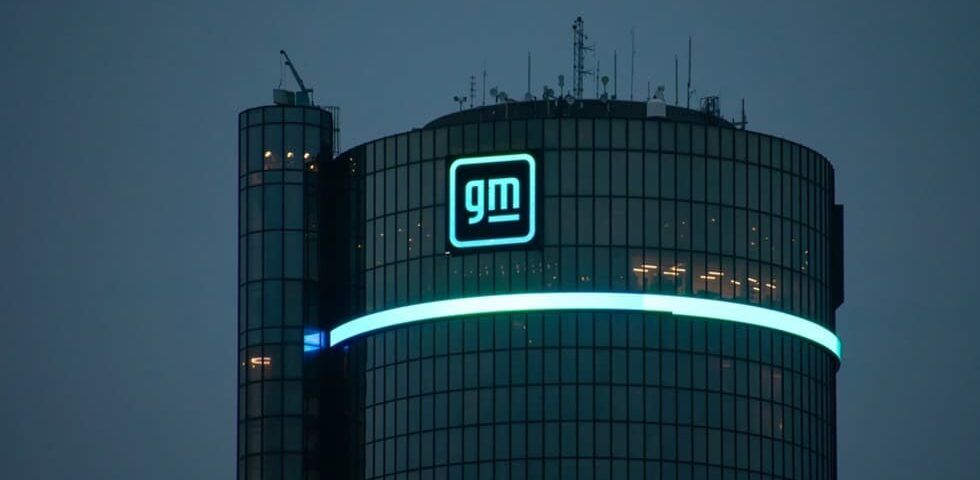- Have any questions?
- 888-432-8878
- steve@sebackground.com
The automotive industry is no stranger to turbulence, and General Motors (GM) is once again navigating the choppy waters of layoffs. In January 2025, GM filed a WARN notice signaling layoffs at its Fairfax Assembly plant in Kansas. The upcoming General Motors’ layoffs will send ripples through the workforce and raise questions about the automaker’s future direction. With GM layoffs in 2025 set to impact 1,695 workers, we try to understand the reasons behind the job cuts, who will feel the brunt of the axe, and how this fits into the automaker’s future strategy.
Why are the General Motors layoffs happening?
The layoffs at GM are being touted as a strategic pivot in 2025. The Fairfax Assembly plant, which has been producing the Chevrolet Malibu, is now halting operations to retool the next-generation Chevrolet Bolt EV. GM is making an aggressive push toward electrification.

GM job cuts will primarily affect hourly production workers, although some salaried staff may also face adjustments. (Image credit: Paper and Lens Co / Shutterstock)
Production of Malibu stopped in January 2025, with the plant’s transition requiring a shutdown. This isn’t a sudden decision. GM has been open about its goal to phase out of production of gas-powered vehicles by 2035.
The upcoming General Motors job cuts reflect the growing pains of this transformation.
Economic pressures also play a major role here. Along with rising material costs, GM is also facing supply chain disruptions and a competitive EV market that is dominated by top players like Tesla.
The GM layoffs in Kansas will be a calculated move to optimize resources during this retooling period. It’ll help ensure the Fairfax plant is leaner and ready for electric vehicle production by early 2026.
Who will be affected by the GM layoffs in 2025?
The layoffs at General Motors will hit the Fairfax Assembly plant the hardest, with 1,695 workers facing temporary job losses. The WARN notice, filed on January 28, 2025, outlined a phased approach.
Roughly 1,009 workers were laid off on January 13, with an additional 686 to be laid off on April 28, 025.
These GM job losses will primarily affect hourly production workers, although some salaried staff may also face adjustments.
The impact of the GM layoffs will extend beyond the factory floor. Fairfax, Kansas, a community reliant on GM’s presence, might feel the economic squeeze. While GM has described these layoffs as a temporary move, there’s still uncertainty for those affected by the GM job cuts in Fairfax Assembly plant.
What the leadership has to say
GM’s leadership has been transparent about its electrification ambitions. In 2021, CEO Mary Barra pledged to invest $35 billion in EVs and autonomous vehicles by 2025, a commitment reiterated in subsequent earnings calls. “Our future is all-electric,” Barra said in a 2024 statement, underscoring the company’s shift away from traditional combustion engines. The General Motors layoffs align with this vision, even if they come at a human cost.
This isn’t GM’s first brush with workforce reductions. In 2018, the company shuttered five North American plants, cutting 14,000 jobs to focus on EVs and trucks. These GM layoffs drew criticism but paid dividends in profitability. The GM job cuts in 2025 echo that playbook: sacrifice short-term stability for long-term gain. Yet, the lack of a firm timeline for recalling Fairfax workers has fueled skepticism among unions and employees.
GM Layoffs in Kansas and beyond
The GM layoffs in 2025 are a small-scale version of broader industry trends. Automakers worldwide are grappling with the transition to EVs, a process facing with logistical and financial hurdles. Ford delayed its EV production targets in 2024, while Stellantis announced its own job cuts to fund electrification. For GM, the Fairfax layoffs are a bet on the Bolt EV’s success. The Bolt EV could reclaim market share in the affordable EV segment.
Yet, the General Motors job losses raise questions about timing. With EV adoption slower than expected, many wonder if GM is moving too aggressively. Others see it as a necessary step to stay ahead of stricter emissions regulations and consumer demand shifts.
What’s next for General Motors and its workforce?
The layoffs at General Motors aren’t the end of the story. The Fairfax plant’s restructuring will wrap up by late 2025, with GM promising to bring back workers as production scales. Meanwhile, affected employees may receive severance or reassignment offers, though details remain sparse. The United Auto Workers (UAW) union, which represents many Fairfax workers, is likely to push for robust support during this transition.
For GM, the stakes are high. The Bolt EV’s predecessor was a modest success, selling over 100,000 units since 2016, but it lagged behind Tesla’s mass-market offerings. A revamped Bolt could bolster GM’s EV credentials, justifying the GM job cuts as a painful but necessary trade-off.
The layoffs at General Motors in 2025 sum up the tension between innovation and stability in today’s auto industry. For the 1,695 workers facing uncertainty, the GM layoffs in Kansas are more than a corporate strategy. Yet, for GM, this is a calculated step toward a greener, more competitive future. As the Fairfax Assembly plant retools, all eyes will be on whether this gamble pays off.
Stay tuned for updates on the GM layoffs and their ripple effects. Have thoughts on GM’s strategy? Share them below.
Subscribe to The HR Digest for the latest layoffs news and updates.
The post General Motors layoffs to hit Kansas workers hardest in 2025 appeared first on The HR Digest.
Source: New feed






